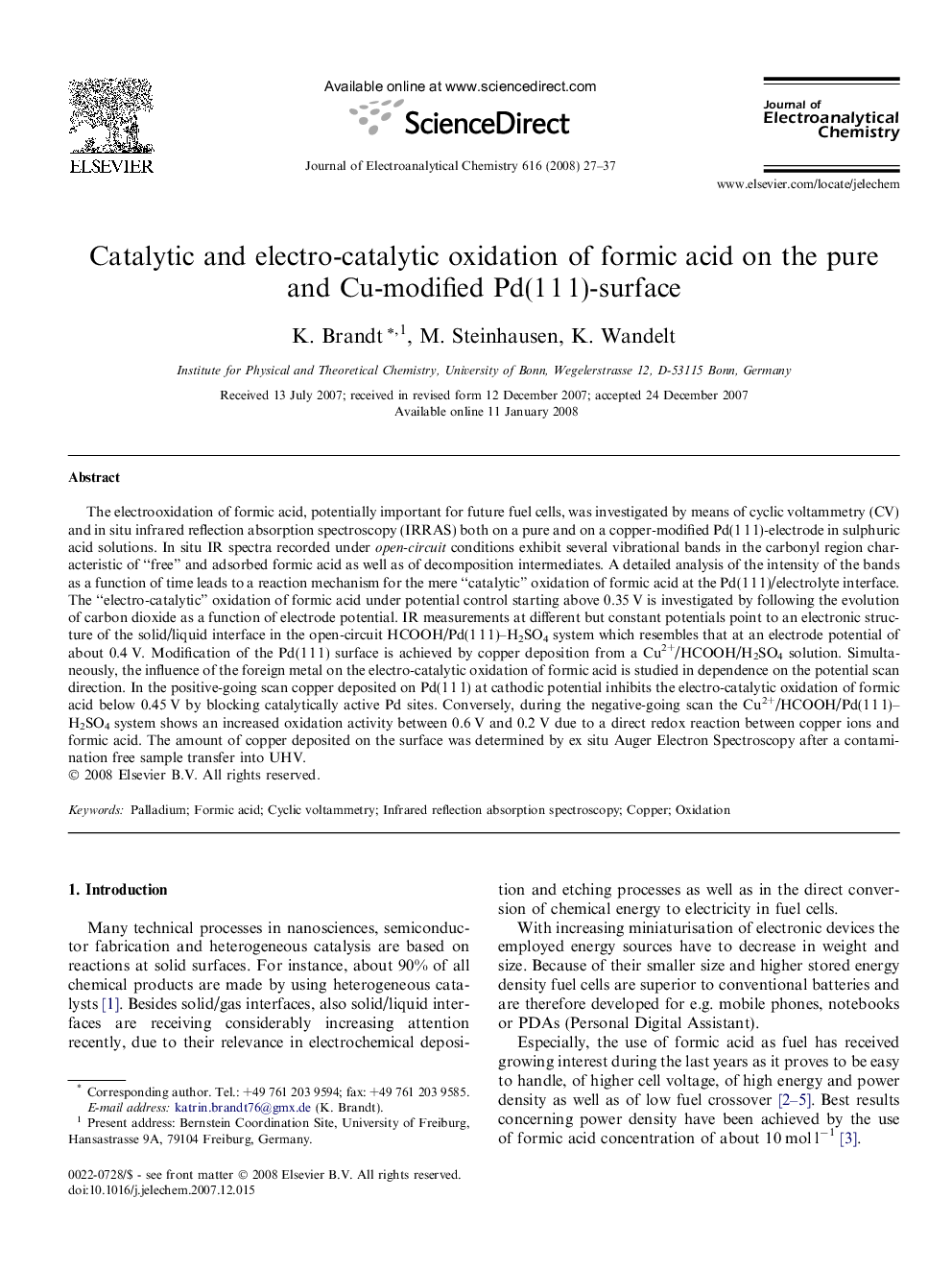| Article ID | Journal | Published Year | Pages | File Type |
|---|---|---|---|---|
| 6663755 | Journal of Electroanalytical Chemistry | 2008 | 11 Pages |
Abstract
The electrooxidation of formic acid, potentially important for future fuel cells, was investigated by means of cyclic voltammetry (CV) and in situ infrared reflection absorption spectroscopy (IRRAS) both on a pure and on a copper-modified Pd(1Â 1Â 1)-electrode in sulphuric acid solutions. In situ IR spectra recorded under open-circuit conditions exhibit several vibrational bands in the carbonyl region characteristic of “free” and adsorbed formic acid as well as of decomposition intermediates. A detailed analysis of the intensity of the bands as a function of time leads to a reaction mechanism for the mere “catalytic” oxidation of formic acid at the Pd(1Â 1Â 1)/electrolyte interface. The “electro-catalytic” oxidation of formic acid under potential control starting above 0.35Â V is investigated by following the evolution of carbon dioxide as a function of electrode potential. IR measurements at different but constant potentials point to an electronic structure of the solid/liquid interface in the open-circuit HCOOH/Pd(1Â 1Â 1)-H2SO4 system which resembles that at an electrode potential of about 0.4Â V. Modification of the Pd(1Â 1Â 1) surface is achieved by copper deposition from a Cu2+/HCOOH/H2SO4 solution. Simultaneously, the influence of the foreign metal on the electro-catalytic oxidation of formic acid is studied in dependence on the potential scan direction. In the positive-going scan copper deposited on Pd(1Â 1Â 1) at cathodic potential inhibits the electro-catalytic oxidation of formic acid below 0.45Â V by blocking catalytically active Pd sites. Conversely, during the negative-going scan the Cu2+/HCOOH/Pd(1Â 1Â 1)-H2SO4 system shows an increased oxidation activity between 0.6Â V and 0.2Â V due to a direct redox reaction between copper ions and formic acid. The amount of copper deposited on the surface was determined by ex situ Auger Electron Spectroscopy after a contamination free sample transfer into UHV.
Keywords
Related Topics
Physical Sciences and Engineering
Chemical Engineering
Chemical Engineering (General)
Authors
K. Brandt, M. Steinhausen, K. Wandelt,
